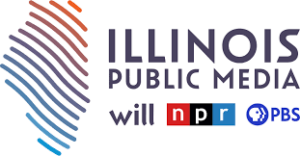Panelists agreed that the proposed transmission standard holds the potential for producing new kinds of audience data that advertisers are looking for today, allowing stations to join the ad industry evolution toward “geo-targeted” data.
3.0 Viewership Data Could Remake Ad Biz
Adoption of ATSC 3.0 technology could enable local broadcasters to provide better, more accurate data about local TV audiences to advertisers — allowing broadcasters to participate more fully in a local advertising marketplace that is transforming rapidly, said panelists in a session Thursday in New York about ATSC 3.0’s potential impact on the business of local targeted and interactive advertising.
The session, titled “The Promise of Targeted and Interactive Advertising,” was part of TVNewsCheck’s TV2020, the all-day conference about ATSC 3.0 held during the NAB Show New York.
While earlier sessions focused on technical aspects of the new transmission standard, this panel discussed the ramifications of 3.0 on stations’ ad sales. Panelists agreed that the proposed new transmission standard holds the potential for producing new kinds of audience data that advertisers are looking for today.
“If we think about where ATSC 3.0 allows you to go, it’s really almost reinventing [or] pivoting into the new generation of TV,” said panelist and ad industry veteran Maribeth Papuga, expert-in-residence at BIA/Kelsey. “But it’s really improving the measurement side to be more consistent with where we’ve always wanted to go, but we never could.”
She said 3.0 will allow stations to join the ad industry evolution toward “geo-targeted” data. “ATSC 3.0 is really a culmination of things that I think the broadcasters have been trying to address over the years,” she said. “A very important thing that ATSC 3.0 can do for broadcasters immediately would be to allow for more geo-targeting. Even just from a geo-fencing standpoint, that has been lacking in broadcast and that’s why cable was able to pick up some of those ad dollars over the years.”
In fact, Papuga cautioned that not adopting the new technology will merely allow the “siphoning” of ad dollars by competing media to continue. “From a broadcast perspective, if you do nothing, your ad dollars will continue to dwindle. The ad model right now for broadcast is really deteriorating because money has been siphoned off into other channels,” she said.
She suggested that ATSC 3.0 might be able to measure commercial viewing as well as program consumption — data the advertising community has been asking for.
“The measuring services have sort of hurt the [TV] industry because you’re only able to measure programs. You’re not able to measure the ad portion of it,” she said.
“The new technology with ATSC 3.0 should, in theory, allow you to measure the viewing of the messages just like you can measure the programming and that would be a leap forward if you could actually isolate the ads from the programming because then advertisers will say, Wow, that’s a real win for us.”
Panelists and speakers throughout the day at the TV2020 conference agreed that 3.0’s interactive capabilities would potentially allow the system to collect far more data about households than is currently available to broadcasters.
But one obstacle to the collecting of data such as household purchasing habits and the like might be government-mandated prohibitions against the collection of such private information, the panelists in the “Targeted and Interactive Advertising” session said.
One panelist, long-time ad industry observer Jack Myers of Myers BizNet, noted that the FCC views this issue more stringently than the Federal Trade Commission. He explained how the two regulatory bodies’ different approaches are impacting the broadcasting business.
“We’re dealing with regulatory issues related to the data because we have the FTC controlling Google and Facebook and creating basically an open marketplace around the use of the consumer data [and] purchase data — any data — coming off of the [set-top] box, any data that they’re able to gather,” Myers said, “whereas the FCC is essentially blocking broadcasters from accessing and using that data for advertising and sales purposes and to show to their advertisers.
“So the first challenge is breaking down that regulatory restriction in Washington … really addressing that disparity and creating a common set of standards and leveling the playing field for broadcasters with the Googles and Facebooks of the world and the digital side, and making sure that broadcasters are not blocked from selling advertising that Facebook, Google and other online digital-based media companies are allowed to [sell].”
See all of TVNewsCheck’s TV2020 coverage here.
































Comments (1)
Wagner Pereira says:
November 12, 2016 at 1:27 am
Proper measurement of who is using is the key to ATSC 3.0 success. It was the reason CBS would not get behind ATSC 1.0 M/HD.